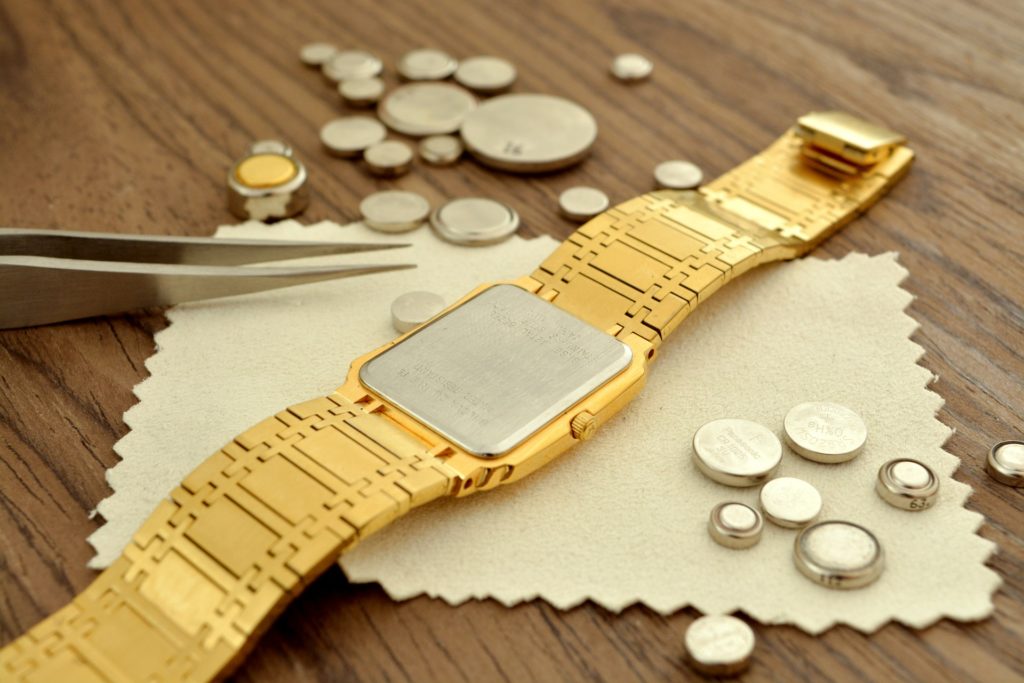Now you can listen to us read the article!
When you wear a watch, you may notice that it leaves a mark on your skin. It might not seem like a problem, but it could pose some health problems in the long term. Should it leave an imprint on your skin, or is this something you need to worry about?
A watch should not leave an imprint on your skin. If your watch does leave a mark, it means it is too tight. A watch that is too tight can cause various problems, such as cutting off circulation to the hand.
Read on if you want to learn why an imprint from a watch is a bad sign and just how to wear a watch correctly.
What an Imprint From a Watch Means
If your watch leaves an imprint on your skin, it generally means that you’re wearing it too tightly. The more severe the imprint, the tighter the fit.
You get imprints on your skin as your watch will be pressing against your skin, with no room to breathe. Your skin is supple, so you’ll be able to press your watch against it pretty quickly. However, pushing too tightly is not suitable for you at all, as we’ll explore later.
A light imprint that goes away within a few seconds isn’t an issue and is, in fact, perfectly normal. However, if your imprint is red and stays on your skin for more than a few minutes, you’ve got a problem.
There are many things that you can do if your watch is leaving an imprint, which shouldn’t be expensive or time-consuming.
Things You Can Do if Your Watch Leaves an Imprint
If your watch is causing an imprint, there are various things you can do to fix this. Let’s take a quick look at them.
Loosen Your Watch
Simply try loosening your watch. Use the next strap hole or chain link to loosen your strap. This should reduce the strain and pressure on your wrist, leaving a less significant imprint.
You should be able to feel a little bit of room between your wrist and your watch for a perfect fit. If it’s too loose and sliding up and down your wrist, go to a jeweler. They should effectively take out a link or adjust the strap, so it’s more to your liking.
Move Your Watch Position
You can also try moving the position in which you wear your watch. For example, jewelers recommend that you wear your watch on the bone where it sticks out. Any other position may cause an imprint and further general discomfort.
Use a Sizing Guide
You should also consider using a sizing guide for your wrist, which will give you a greater understanding of the size of the watch that you need. If you haven’t already purchased a watch, or you’re looking for a new one, a sizing guide is a great way to ensure that you’ll get a perfect fit every time.
Experiment Where You Wear Your Watch
Finally, sometimes you’ll just need to experiment. For example, try wearing your watch on the other hand, take links out, add links and do everything you can to find the comfiest position for your watch. Ten minutes of experimentation could save you a lot of time and money.
Health Risks Associated With Watch Imprints
There are a variety of risks associated with a watch that is worn too tightly. Let’s look at these in more detail. Remember to always consult a doctor in relation to medical issues!
Carpel Tunnel Syndrome
When your watch is too tight, it can damage the nerves between your hand and wrist. Over time, this can get pretty serious. Constant compression of nerves will lead to long-lasting pain in the hand and wrist, even when a watch isn’t worn. Other symptoms include numbness and soreness.
Carpal Tunnel Syndrome is also really hard to treat and can even be irreversible.
Poor Blood Circulation
A watch that is too tight can restrict the blood circulation to your hand, which can cause numbness as well as pins and needles. You’ll probably feel the discomfort reasonably quickly, and if you do, it’s imperative to take your watch off immediately. Ignoring these symptoms can lead to prolonged nerve damage in the wrist and hand.
Muscle Cramps
This is a more general pain associated with a watch that is too tight. Both carpal tunnel and a lack of blood flow can cause significant muscle cramps. This can affect your work-life massively, from writers to builders, as everyone needs their hands.
Where To Wear Your Watch
Many people get confused as to which hand they should wear their watch on.
Generally, the rule of thumb is to wear your watch on your non-dominant hand. This allows you to use your dominant hand for various tasks while leaving your other hand free to tell the time.
Many watchmakers tailor their watches for right-handed individuals to wear on their left hand. That is why many tools are on the right side for easy access. But, don’t be influenced by the rules. Instead, wear your watch on whichever hand you see fit. It’ll be more comfortable that way, too.
Advantages of Wearing a Watch
If worn correctly, a watch can be your best friend. Here are some significant advantages of wearing a watch:
- Convenience: Instead of having to drag your phone out every five minutes or ask random strangers, who all have watches, your watch allows you to have the time in quite literally a flick of the wrist. This is incredibly convenient and can help you manage your time much more efficiently.
- Stylish: There is no doubt that a watch is one of the most fashionable accessories you can have. You can dress them up or down, and a good watch will elevate your style, no matter the occasion.
- They retain their value: Many watches might seem ludicrously expensive when you buy them. However, they’ll generally hold their value and may even go up over time. So, what you’re doing when buying a watch is investing your money into a future collectible.
Conclusion
Overall, you should never wear a watch that leaves an imprint. This can cause you some serious health issues and will generally be painful and an encumbrance to wear. Instead, your watch should sit firmly but with wiggle room. This will ensure maximum comfort without the annoyance of your watch sliding all over the place.
A watch is a great accessory and should be worn with the respect it deserves.
Remember you might be able to take your watch to the shop you bought it from, for help with sizing and adjustment!







